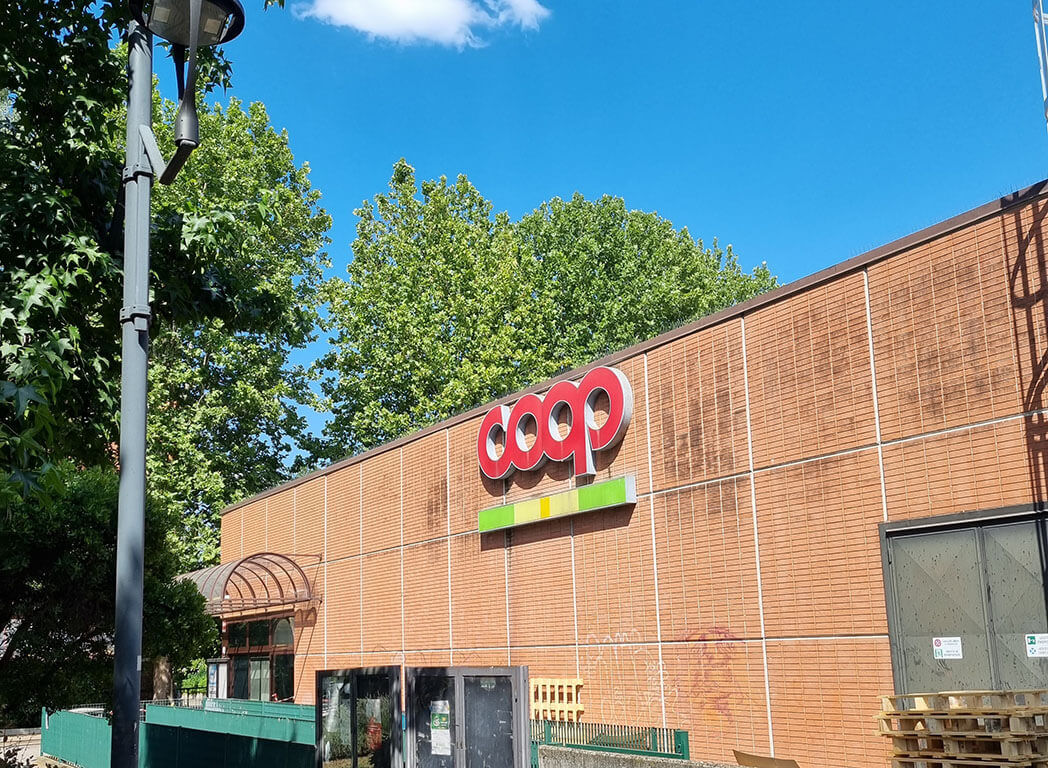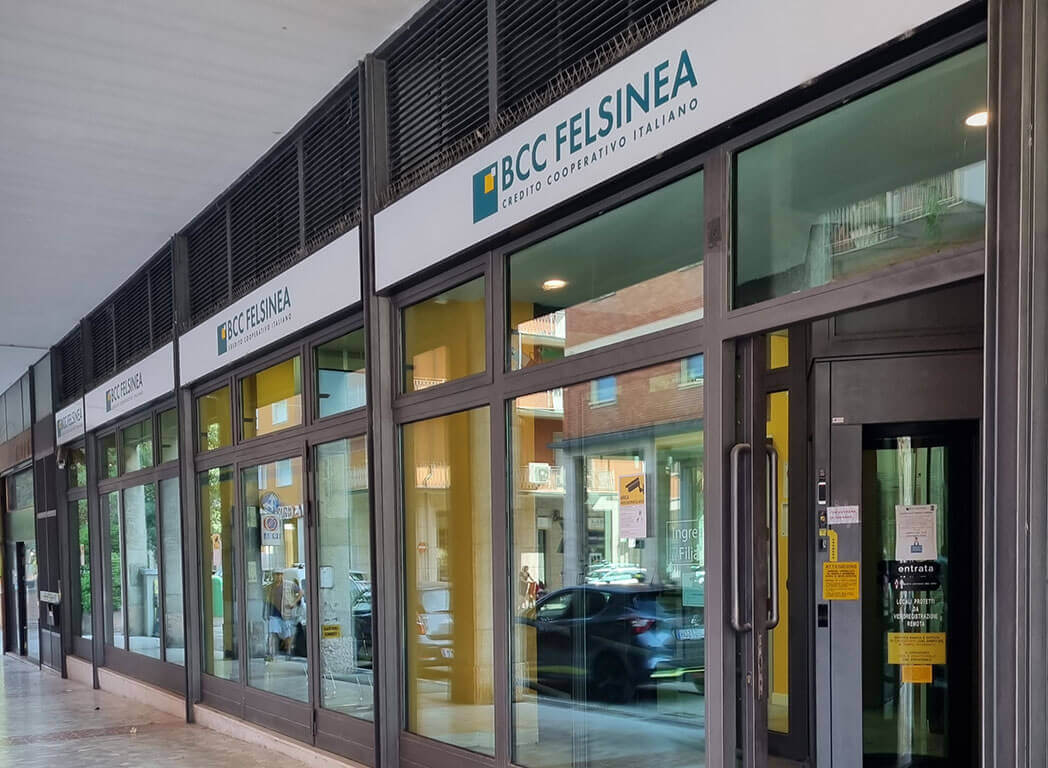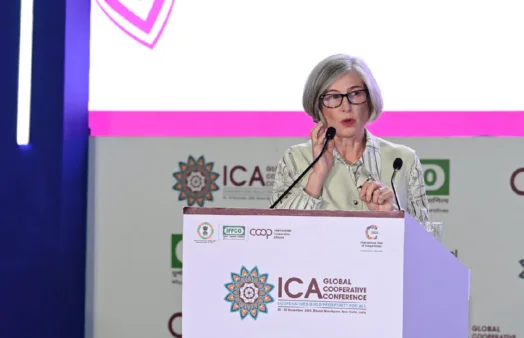11 July 2022
Anthony Taylor, Head of Corporate Affairs, BCCM, shares his notes from a recent study tour where he visited co-operatives in Spain and Italy
1. Mondragon, Basque Country
The largest corporate group in the Basque Country and seventh largest in Spain is actually a highly successful co-operative federation – the Mondragon Corporation. It is headquartered in the town of Mondragon, an hour or so outside the major city of Bilbao.
An inspiration for many grassroots co-operative activists around the world, the Mondragon story is still not as widely known as it should be among policymakers given its worker empowerment and regional development successes.
The Mondragon Corporation is made up of 95 independent and mostly worker-owned co-operatives operating across manufacturing (the bulk of the Group), retail, research, education, agriculture, services and banking, creating work for more than 81,000 people.
Part of the success of the Mondragon Corporation is that the co-ops work closely together to share a range of resources, including shared financing, education and research. There is an internal welfare system managed by the Group and, in a real demonstration of solidarity, each year there is a redistribution of surpluses from the most profitable to least profitable co-operatives. It is uncommon to see co-ops commit to this level of “co-operation among co-ops”, but where it can be achieved it is extremely powerful. The only other example that comes to mind for me is a parochial one, the AFL’s salary cap and redistributive funding allocation system, which has meant that most of the clubs in the league have been successful at some point in the last two decades.
a. Mondragon University
I was hosted at Mondragon University’s Bilbao city campus by Ana Aguirre, Youth President of the International Co-operative Alliance, a Mondragon University graduate and working for a co-op business based at the campus, Tazebaez Co-op. Traditionally a regionally based university in line with Mondragon’s roots in the regional economy outside Bilbao, the city campus is bringing the co-op message to the urban population.
The University is actually eight co-ops, one for each faculty. The campus has space for teaching and research, but also for businesses and start-ups. Students and businesses can easily interact, so students have access to entrepreneurial opportunities while they are studying. Businesses at the campus operate across a range of sectors and include co-ops and other models.
Student spaces are informed by co-op principles. Groups of students go through their degrees together and have a space that they self-manage. These spaces are in a common area with spaces randomly assigned, not on basis of seniority or hierarchy between year levels.
b. Otalora training centre
Just outside of the town of Mondragon itself I was hosted by Ander Exterberria, co-op promotion lead, at the Group’s Otalora training centre, which also hosts a museum dedicated to Mondragon founder, José María Arizmendiarrieta, who came to Mondragon as a young Catholic priest in 1941. His promotion of co-ops was grounded in a belief in the dignity of humans: “Let us start with the human person. A person owning more of nature, his or her own life, rights and obligation, in brief, Being more human.”
His early activities were not actually to support the formation of co-operatives but to engage with young people, supporting formation of cultural and sporting organisations, and in 1943 a technical school. The first manufacturing co-op came later, in 1956. He said that “It has been said that cooperativism is an economic movement that uses the methods of education. This definition can also be modified to affirm that cooperativism is an education movement that uses the methods of economics”.
Today, education is still understood as fundamental to maintaining a strong co-operative business culture across the Group (both technical education as promoted at the University, and education specific to co-op structures). At Otalora, members of the Group’s 60-person corporate services co-op deliver a range of staff, management and leadership training that builds understanding of the Group’s values and objectives, its structural arrangements and effective co-operative management and governance. This affirms the importance of the BCCM’s steps in recent times to develop a more rigorous and co-ordinated (working with partner organisations) training program for Australian co-ops and mutuals that affirms and builds our collective culture.
While there are contradictions and challenges for the Mondragon Corporation – representatives emphasise it is no utopia and is constantly focused on remaining economically competitive and efficient – the big picture results are compelling: the Basque Country is one of the most equal parts of Spain, and it has visibly vibrant regional towns and a thriving economy.
2. Barcelona, Catalonia
The co-op movement has a rich history and vibrant presence in Catalonia with more than 3,000 co-ops currently.
a. FundacióRoca Gales
This Foundation commemorates one of Catalonia’s co-op pioneers, Josep Roca I Gales. At the Foundation offices is an extensive library, built around a collection bequeathed by another co-op leader. Serving as a reminder of the internationalism of the movement, upon entering the office the first image one sees alongside a portrait of Roca I Gales is a drawing of the original Rochdale Co-op at Toad Lane in Rochdale, UK.
Alongside preserving and celebrating the history and historical resources of the movement, the Foundation has a more expansive role in promoting co-ops, facilitating public discussions on the role of co-ops to solve challenges such as housing affordability and through publication of a monthly magazine, Cooperació catalana.
The Foundation is a strong example of the expanded and valuable communications role that institutions such as co-operative archives can play, building around their bases in historical memory and preservation.
b. Coòpolis
Situated in an extensive community-managed reclaimed factory site in the Sants district is Coòpolis, a co-operative incubator. There is an emphasis on projects that support women (or are underpinned by feminist principles), migrants and just environmental transition. Entrepreneurs need to pay a subsidised amount for a workspace and in return receive three years of support and advice to develop their co-op business idea.
The three-year time frame for provision of support is positive, given that co-op development is a “go far, walk together” rather than “go fast, walk alone” game. When I visited, Coòpolis was in the process of moving from its current site to a larger site where it will have capacity to incubate up to 50 co-ops.
Coòpolis is funded by the Barcelona Government. From government’s perspective, the project is part of its strategy to promote the Solidarity and Social Economy in the city. It is understood that co-ops can contribute to more sustainable work and living conditions in the city and are worthy of public support.
The incubator is managed democratically by a consortia of co-op development bodies with expertise across the focus areas. The genuine partnership between government and the movement to deliver on shared social goals (e.g., decent work) is something Australian policymakers should take note of.
There is also a striking difference from Australia in the development of the Social and Solidarity Economy as the framing for many initiatives. An understanding of the importance of solidarity in building sustainable and socially focused businesses is often missing in Australia. Instead, we tend to have a disconnect between the advocacy and community groups based in values of solidarity (i.e., by and for impacted people, but not knowing about co-op enterprise models), the established co-op movement (which has experience and resources for translating this social solidarity into an enterprise setting, but is not strongly connected with grassroots movements) and mainstream social enterprise (which is deeply interested in inclusion of marginalised groups in the economy, but appears with some exceptions not to have taken on board the importance of solidarity and self-determination to deliver social change through enterprise).
3. Bologna, Emilia-Romagna
Emilia-Romagna is a region powered by the co-op movement – around 30% of GDP is with co-ops and mutuals. Bologna is the capital of the region and has long been a centre for the movement.
a. Coop supermarkets
The presence of co-ops in many retail sectors is so widespread in the city that you can’t avoid learning a bit about the movement here!
One example is the dominant supermarket chain in the region and across Italy, Coop. Coop brand supermarkets are a run by a national federation of local and regional consumer co-operatives. The local member of the federation in Emilia-Romagna and surrounding area is called Co-op Alleanza 3.0, which formed from a merger of three regional co-ops in 2016 and became a co-operative with 2.7 million memberss. Co-op Alleanza 3.0 is an excellent example of how merger and federation are not mutually exclusive strategies for the movement.
Shopping at the local Coop supermarket, the value proposition for members was clear – the supermarket stocks many of its own branded lines that members can earn points on, and its communications and branding were confident about its co-op identity, its focus on protecting members interests as consumers and on generating value for the local economy through community contributions.
b. Montagnola di Mezzo, La Piccola Carovana
In Bologna, it is possible to avoid traditional hotels or Airbnb, and instead book your stay at a co-operatively managed location through Fairbnb, a co-operative booking platform. Using Fairbnb, I stayed at Montagnola di Mezzo, an old 1700s homestead building in a park on the outskirts of Bologna that is managed by a social co-operative, La Piccola Carovana, on behalf of the local council. Co-operatives are also involved in other aspects of park management and use.
Social co-operatives in Italy generally have a multi-stakeholder governance structure, and a focus on generating work opportunities for members of marginal communities (as one of the member classes) through the enterprises they operate. As in Catalonia, it is striking to see a mature model of partnership between government and co-operatives to deliver on shared social goals.
Getting a sense on the ground of the co-operative movements across these three regions confirmed the long-term value that co-ops can offer their members and communities. This experience also demonstrated how the impact of co-operatives is magnified when they hold fast to the principles of co-operation.


Co-ops are ubiquitous in Bologna. Pictured are the co-op supermarket and a co-op bank branch in suburban Casalecchio di Reno. The sign at Montagnola di Mezzo explains how the historic homestead and the wider Chiusa parklands it is situated in are managed by the local council and a consortium of co-ops.



